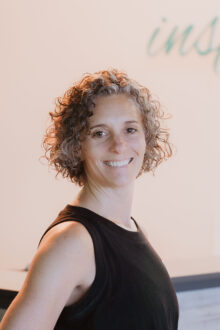Shoulders: Strength, Stability & Standing Posture
With Lindsay Hendrikson
Shoulder dysfunction is increasingly common, often stemming from modern lifestyle habits such as prolonged sitting and excessive screen time. These patterns can lead to postural imbalances like rounded shoulders, forward head posture,and kyphosis, resulting in inefficient or dysfunctional shoulder movement—often without any pain. As instructors, it’s our responsibility to recognize these patterns and guide clients toward more functional movement.
Pilates teaches us to “move the arms from the back,” but what does that truly mean? And how can we visually identify whether a client is moving correctly?
In this CEC, we’ll begin with a brief and accessible overview of shoulder anatomy. You don’t need to be an anatomy expert, but understanding the key muscles and bones of the shoulder girdle will help you work more confidently and effectively.
From there, we’ll move into practical application using the Reformer and other apparatus to observe and experience correct versus incorrect shoulder mechanics. You’ll learn how to cue for optimal alignment and create engaging, targeted sequences that build shoulder strength, enhance stability, and improve posture in standing positions.
By the end of this course, you’ll walk away with:
-
A deeper understanding of shoulder structure and function
-
Tools to assess and identify common postural deviations
-
Effective cueing strategies to promote correct sh
-
oulder and arm movement
-
Creative exercise ideas to strengthen and stabilize the shoulders while improving overall posture
Whether your clients experience discomfort or simply lack awareness, this course will help you better support them in moving with ease and efficiency.
July 25, 2025 1:00-3:00p CDT
Register: North America/Asia
Register: Europe/Middle East



